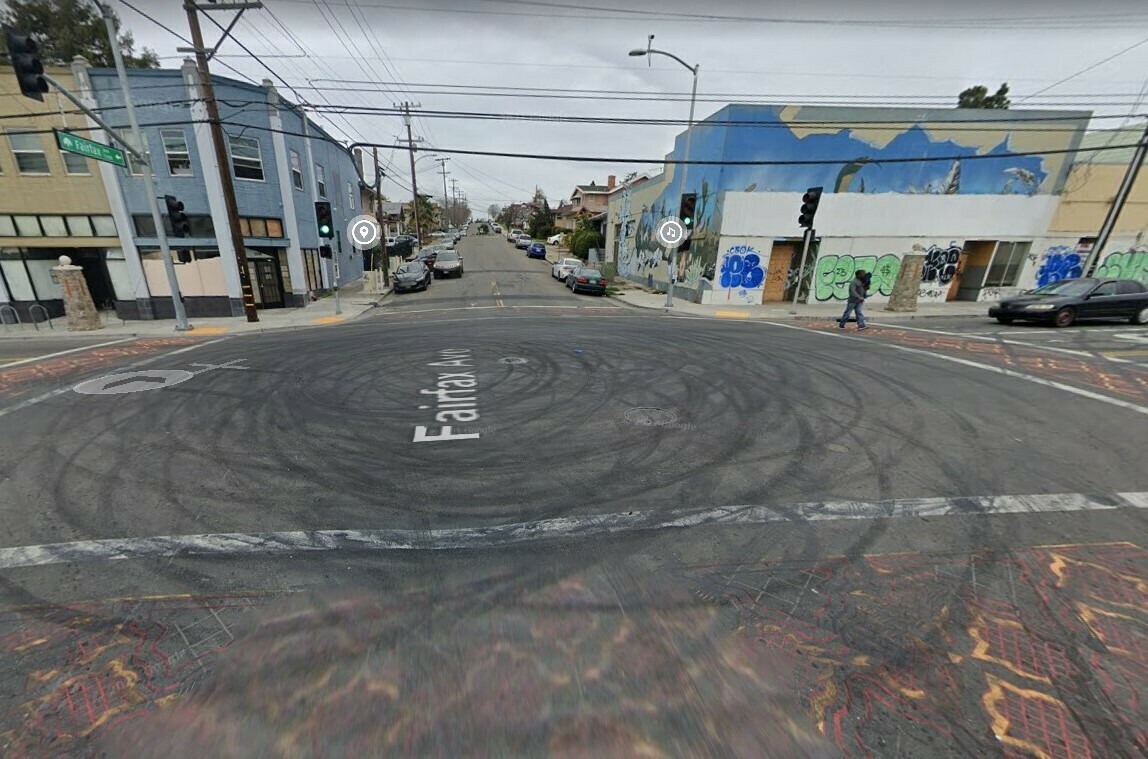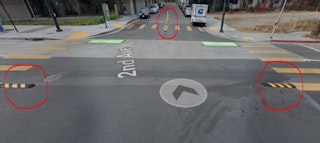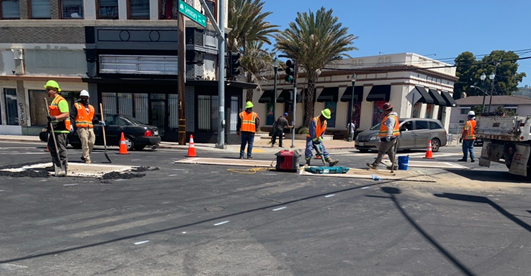There is no established best practice or evidence of effective engineering treatments to prevent this type of dangerous driving behavior, and any of the hundreds of intersections in Oakland are theoretically a potential location for sideshows, “donuts” or stunt driving. The City of Oakland has been working with agencies throughout the region to develop, test and implement strategies to mitigate this growing concern.
Because there are no established best-practice strategies to prevent sideshows, the City has embarked on an inter-departmental pilot led by the Oakland Police Department (OPD) and the City Administrator’s Office with support from the Oakland Department of Transportation (OakDOT) to pilot engineering strategies to support enforcement efforts at some of the most impacted intersections in Oakland. Proactive enforcement tools and creative legislation lead the way to address sideshows, with engineering complementing a multi-faceted approach.
OakDOT has led the nation with this innovative work to deter sideshows, which initiated beginning in 2021[1] and continues to evolve with support from City leadership to help address this issue that adversely impacts on the safety and quality of life of Oakland communities.
Engineering treatments will continue to balance the need for deterring sideshows with preserving the functionality of our streets for all road users.



